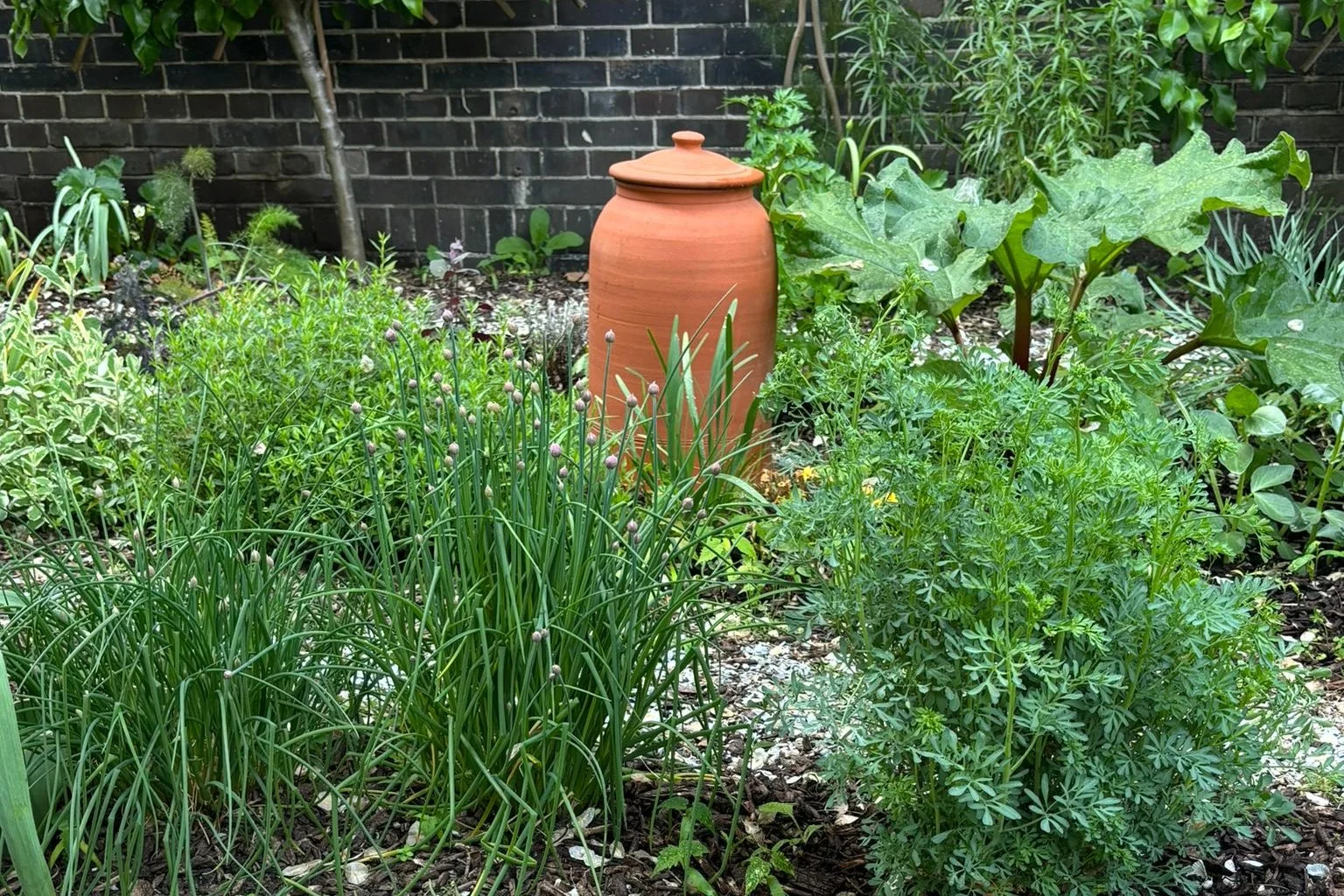Cityplot recipes -6
ZOË'S RHUBARB-STRAWBERRY JAM
A seasonal recipe for mid-summer
Zoë and the happy harvest at the Stadsboerderij Osdorp, Amsterdam
Zoë’s rhubarb-strawberry jam
(Mid-summer season jam)
Ingredients:
• 1-1,5 kg fruit
~750 gr fresh rhubarb
~250 gr fresh strawberries
(You can vary the ratio depending on what you've got)
• 500 gr Gelling/Jam Sugar (2:1 fruit to sugar)
• A splash of water
•1 pack vanilla sugar (1tsp)
•1 lemon – zest and juice
Method:
1) Prepare and sterilise your jars, rings, and lids*.
2) Remove the thin skins from the rhubarb branches. Cut them into small pieces.
3) Wash the strawberries and remove the greens. Cut them into pieces as well.
4) Add both fruits to a large saucepan, along with the jam sugar and vanilla sugar.
5) Over medium-high heat, bring everything to a boil, for a moment. Keep stirring with a spoon while it warms up, so it won't stick to the bottom.
6) When the mix is boiling, lower the heat and let the jam simmer for another 4-5 minutes.
7) Remove the pan from the heat. Take a hand blender and blend everything until there are no coarse pieces, or until the consistency of your choice is reached. You can also choose not to mix it.
8) Add the lemon zest and juice.
9) Put the jam in the prepared jars, close them well and let them cool at room temperature.
*You can sterilise them in the dishwasher on a hot program, or by boiling them for a few minutes in a large stock pot.
Rhubarb-jam making with kids at the Stadsboerderij Osdorp, Amsterdam
The result: delicious!
Rhubarb harvesting, propagation and care
Rhubarb is a lovely perennial plant that will add colour and an early harvest in any garden. From April to June, leading up to mid-summer there’s often a glut of rhubarb. Harvesting rhubarb is easy, select a thick, long stem, grasp firmly near the bottom and give it a little twist. Discard the leaves as they are toxic, but make great mulch or biomass for the compost.
Generally after mid-summer the stems become tougher and they want to start flowering, so we traditionally stop harvesting. This is also to let the plants grow strong again so we can have a good harvest the following year. Usually the flowering stems are cut off. In the late autumn or early spring, you can dig up larger clumps of rhubarb and divide the roots to make new plants.
Rhubarb also grows easily from seed, they produce a lot of seeds if you let them and the young shoots have become a trendy delicacy. You can also force rhubarb in early spring to make the stems especially long, straight and very tender by covering them with long pots.
Photos by Ann Doherty, Zoë Jungmann, Eva Thomassen and Helder Dias Pinto
by Zoë Jungmann, Amsterdam team, workshops, kids
Zoë is a chef & educator, and a member of Cityplot. Every early summer, they re-fall in love with rhubarb, especially when it's freshly harvested. The combination of rhubarb & strawberry is one of their absolute favourites!





